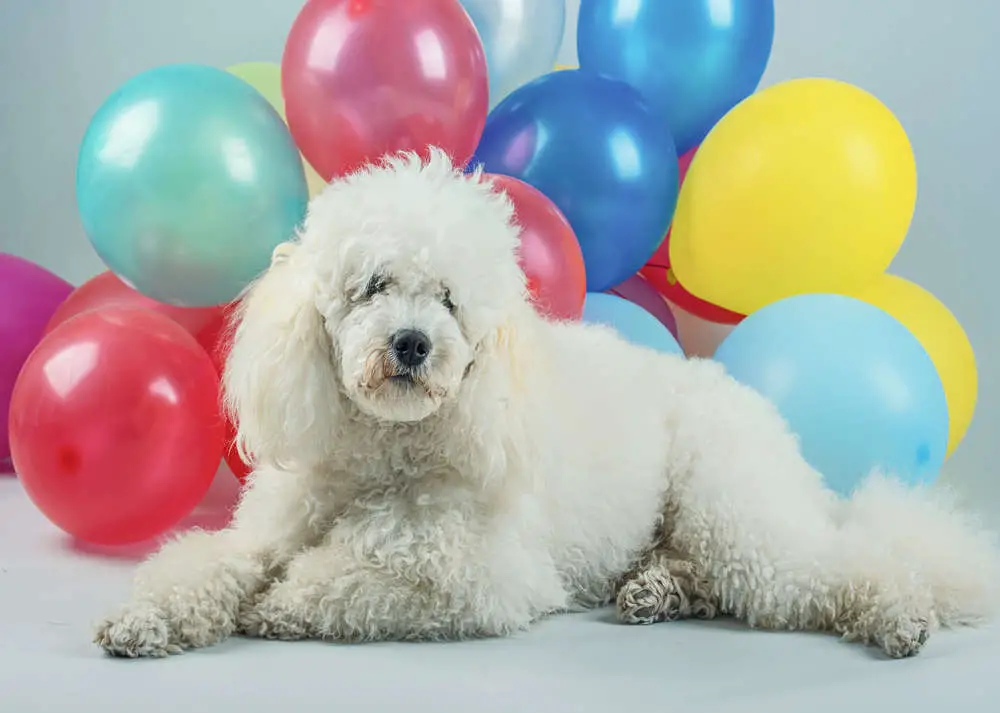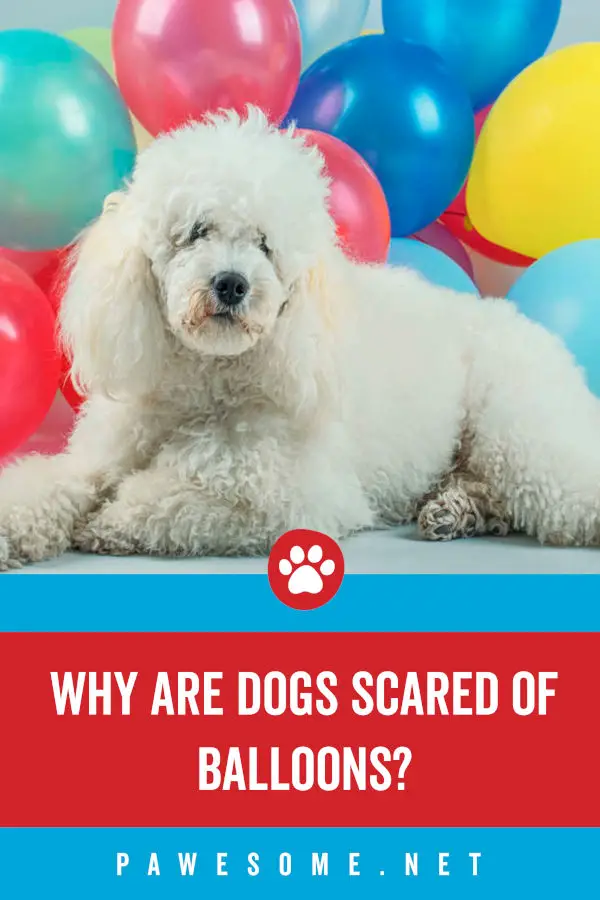 It’s very tricky when you get a new dog and don’t yet know what their phobias are. Fear of balloons, like fireworks, is common among dogs.
It’s very tricky when you get a new dog and don’t yet know what their phobias are. Fear of balloons, like fireworks, is common among dogs.
It’s worse when you have kids in the house who love balloons and a pet who is petrified of it. It’s not only stressful but might also have dangerous consequences.
Especially, if you consider the fear of balloons because there have been stories of dogs biting children when they were under such intense stress.
Understanding their fears can be helpful in handling the situation. So what causes these phobias?
Why? The Very Beginning
Every dog is unique in the way it chooses its favorites and develops fears. So when you get a new pet, start with no assumptions.
Here’s what you need to remember. Each puppy comes from a specific environment into your environment.
So you need to keep its background in mind and slowly get it accustomed to yours. Some dogs are afraid of vacuum cleaners and some are terrified of snow shovels.
Your first takeaway should be that they haven’t been around these objects much. How does this happen?
Firstly, puppies inherit a lot of behavioral traits from parents. So some of these fears are genetic.
But there is such a thing as conditioning and it works in dogs just the way it does in humans. And for that, the first eight weeks of a dog’s life are crucial.
This is the time when a dog learns behavior from its parents and siblings. Unfortunately, dogs with no siblings, called singleton puppies, are more prone to phobias.
This is particularly true in terms of fearing other dogs simply because of the lack of company growing up. So, you might want to ask whoever you are getting the puppy from for as much background information as possible.
The Next Phase
Once you bring the puppy home, they are your responsibility. So make sure you mindfully give them an informal orientation of sorts.
The period of 8 to 16 weeks is key to developing their socialization skills. Now, there are many misconceptions among dog parents about socialization.
It’s not just about taking them for a walk and letting them meet a couple of friends or strangers every now and then. This is a huge factor in their behavior, including how they interact with the people at home, visitors, strangers and on the street and even objects.
So you must notice patterns and introduce them to certain objects (like balloons) that are going to be around, which will be the case if like birthday parties with balloons in your home.
There are many reasons for dogs to be afraid of balloons. The simplest being, their previous environment did not have any balloons and the idea of an inflated object that could possibly end up in a loud pop is terrifying to them.
Balloons also make a unique sound when rubbed together and that might be alarming to the dog.
The second reason is, of course, that it is some kind of a trigger to previous trauma. It is possible that a balloon exploded uncomfortably close to them and it has left an indelible mark on their memory.
A sudden balloon pop in the face can startle even humans who understand what just happened. So it is understandable that dogs react to it in more than just a startle.
It is also a well-known fact that dogs have an evolved sense of hearing. That could be the reason it goes from startle to phobia.
You might also want to keep an eye out for kids who are amused by the frightened dog and repeat the act to amuse themselves. That’s just cruel and they need to be stopped.
How to Deal with These Fears?
If you got your pet as a puppy, you are lucky. Make sure you take good care of them during the socialization phase.
That means introducing them to a good number of people: friends and strangers, other dogs and even objects that you are likely to use around the house. That ranges from vacuum cleaners to snow shovels, depending on your lifestyle.
It is also important to continue this process in different seasons. Human beings change the tools around them and sometimes, their lifestyles too, depending on the climate and our pets need to be made comfortable with all such changes.
If you got the dog after this phase, you need to monitor their behavior and start identifying their phobias. When your dog is uncomfortable it tells you in many different ways.
Looks for signals like scratching, breaking eye contact and turning their body away. Sometimes it is more obvious, like running in the opposite direction.
Some dogs also exhibit fears in the form of cowering, growling, whining and shaking. This means the fear is quite strong.
When you figure out what is causing the phobia, confrontation is not the best solution. What you need to do first is remove your dog from this uncomfortable situation and reassure them that they are safe and that you are going to take care of them.
When the fear is strong, it might take 24-72 hours for your puppy to calm down. Be patient with them.
Dealing with a dog’s phobia is much like handling a child with a phobia. You need to sit with them and find a way to explain or demonstrate to them that the object they are afraid of is not a dangerous one.
This process is called desensitization and it is quite effective. Introduce the object to their everyday life in an organic way.
Trying positive reinforcement is one of the best ways to do that. Place high-quality treats near the balloon and let them come get it.
You could also start by introducing the balloon in their vicinity, but not where they rest. This is a violation of their space and they do not take it well.
Give them a treat for when they show progress in overcoming their fears. But remember that some dogs lose appetite when they are experiencing anxiety.
And if you force a confrontation, you are likely to lock that fear into their brain for a long time if not forever.
Sometimes, dogs also develop fear of objects they were comfortable with in the past. This is because of something called a “fear event”.
When these things happen inexplicably, you might want to talk to your vet and take the dog to a behavioral therapist.
While some fears are deep seated and recurring, there’s also a seemingly inexplicable but common occurrence called a “fear event”, when a dog suddenly becomes afraid of something it was previously comfortable with, Hanson stated.
Conclusion
There is no sure shot way to pinpoint the reason why dogs are afraid of balloons. It might seem silly but is something we need to take care of.
Here are some of the possible reasons for this phobia. The simplest explanation is that it is genetic. The next plausible explanation is that they were not introduced to balloons in their previous environment. They might be afraid of the unique sound balloons make when they rupture.
It’s possible that during the socialization phase, the owners failed to make an effort, leaving the dog with phobias. And, of course, the balloon pop is loud and because of their advanced hearing, it might be more than a startle.
Instead of mocking or neglecting their phobias, pet owners should try to help them get rid of the fear.

